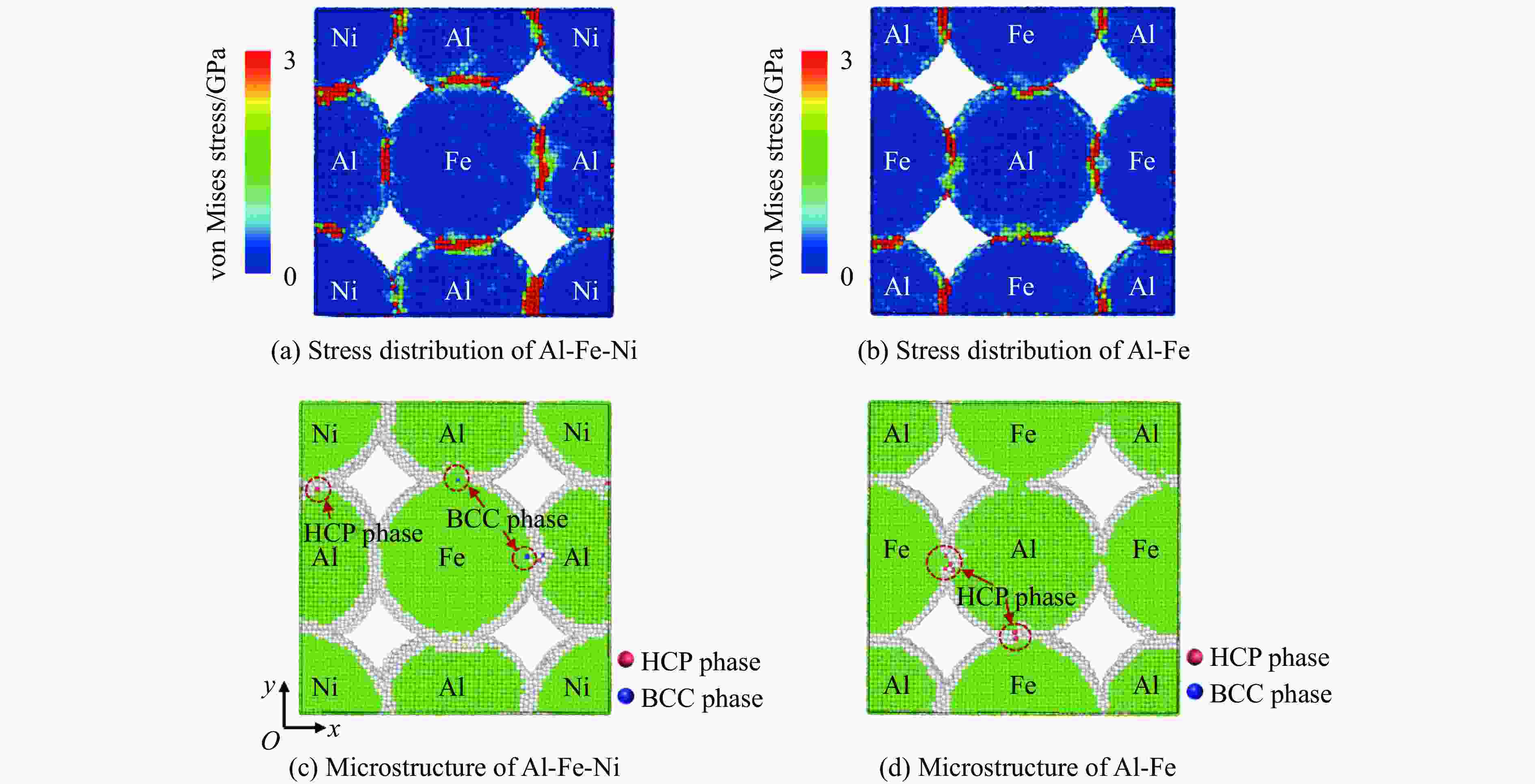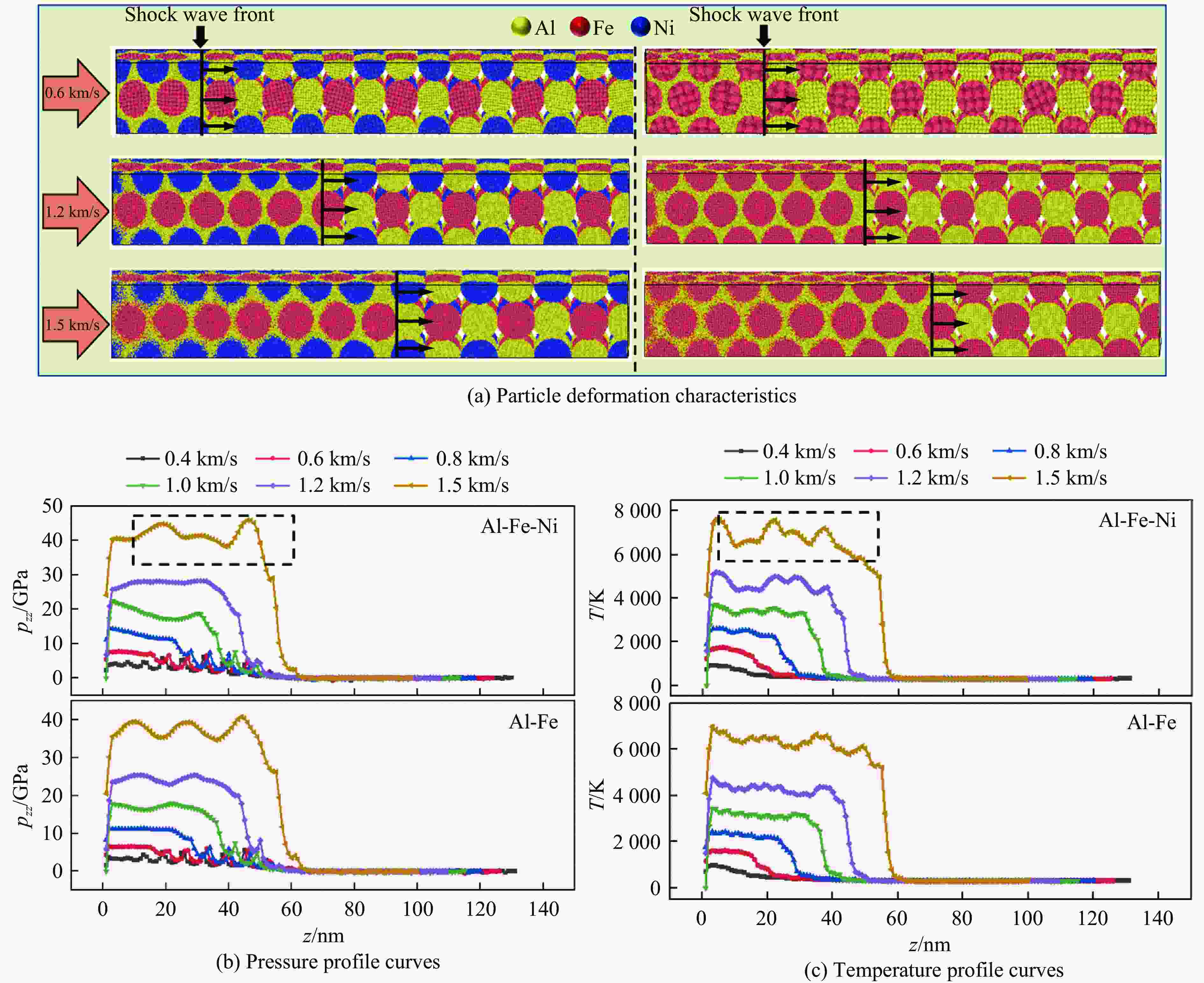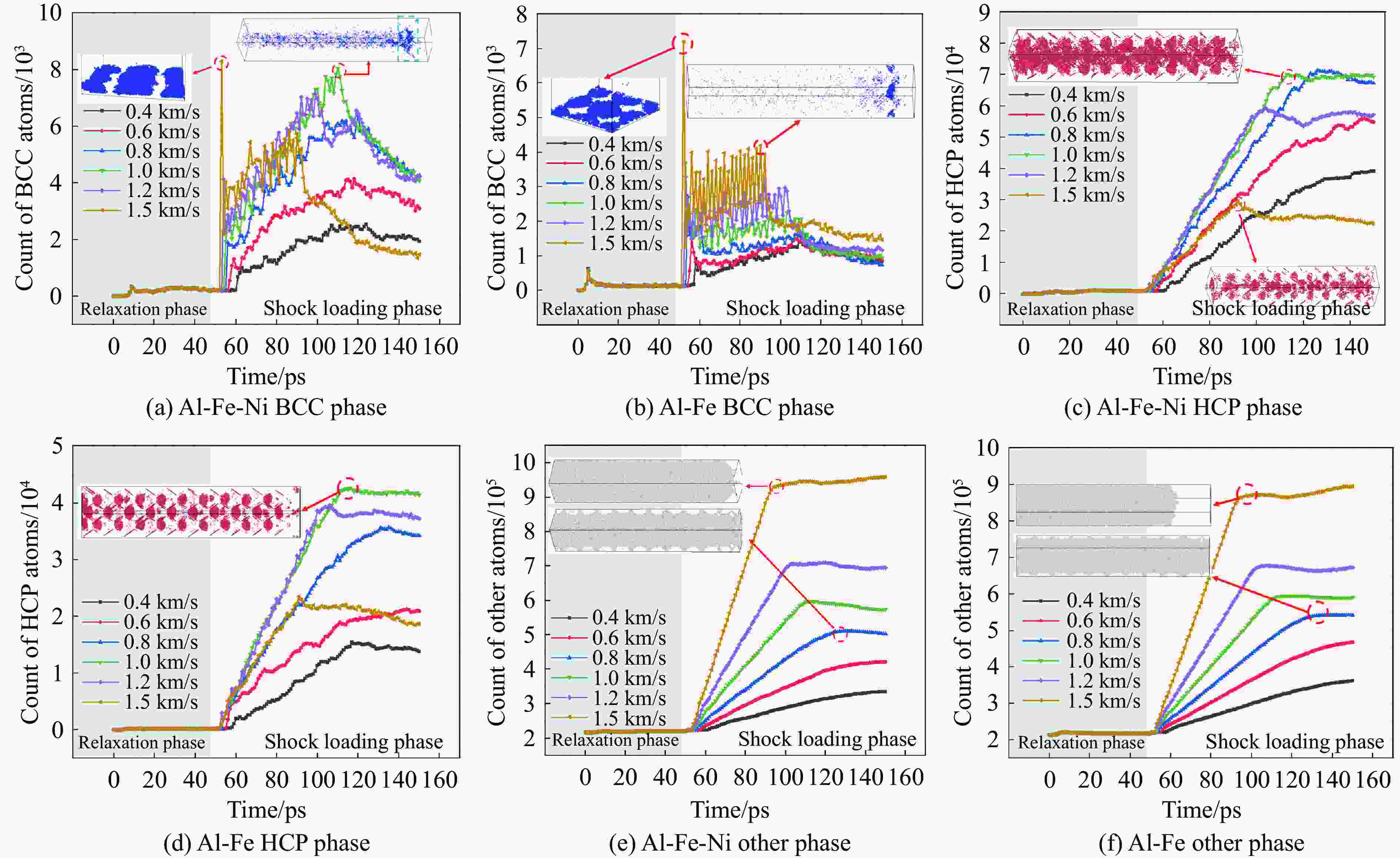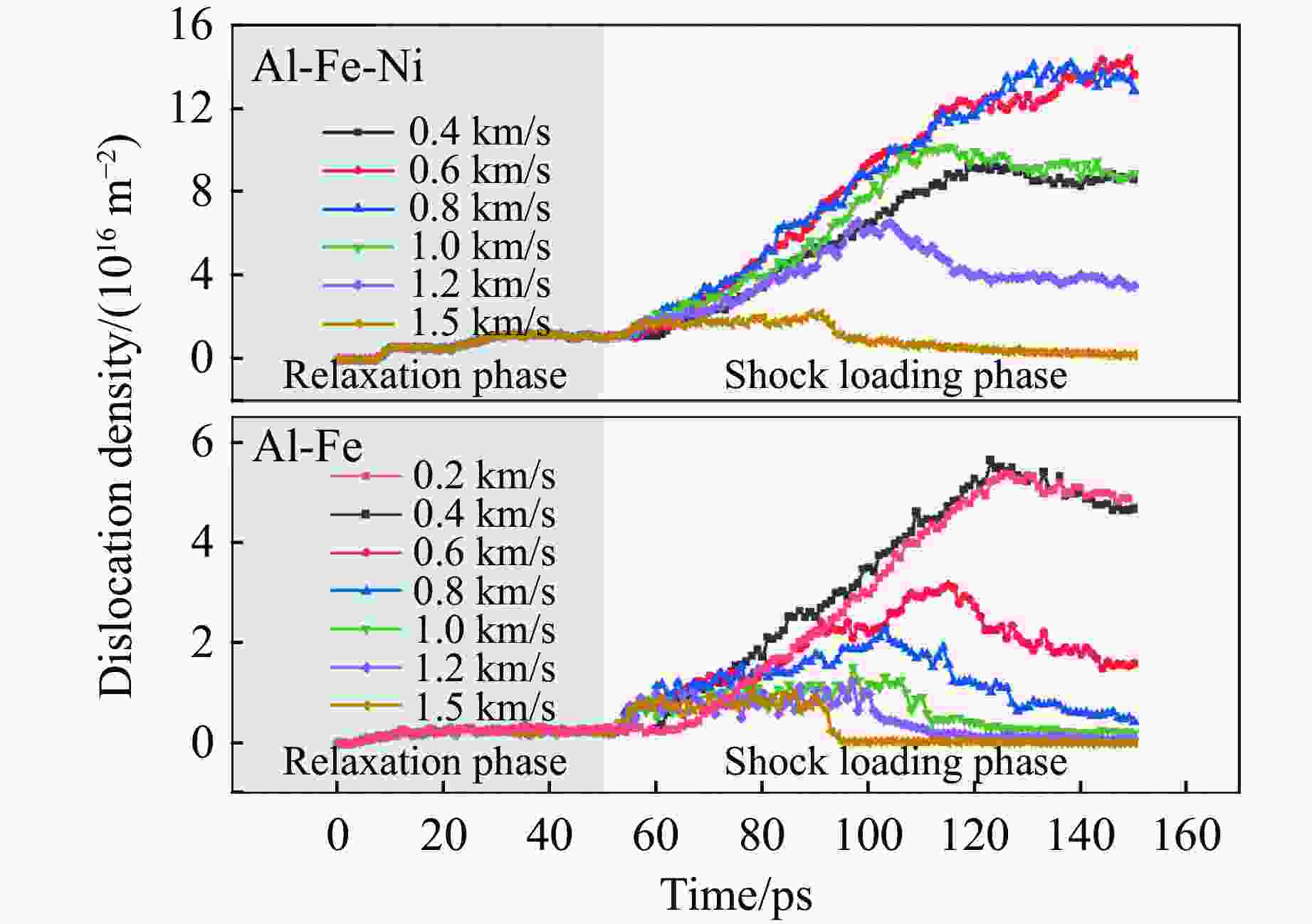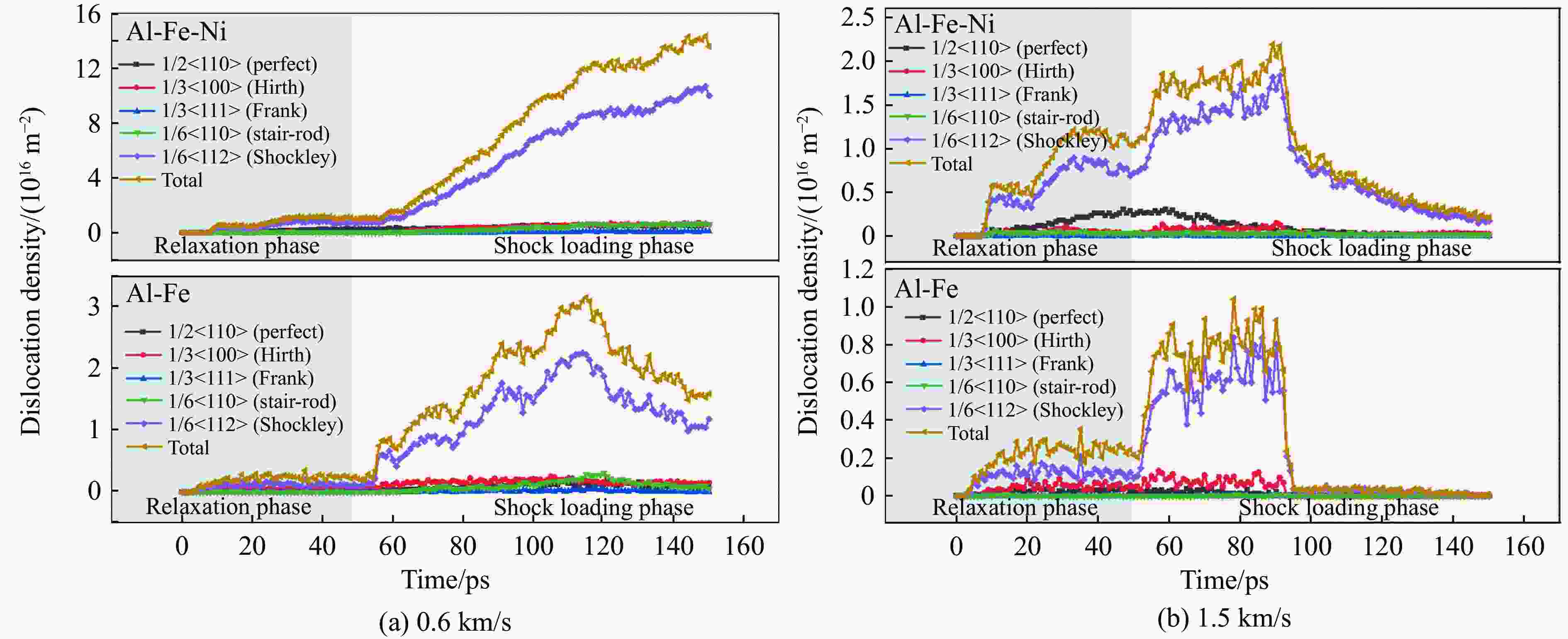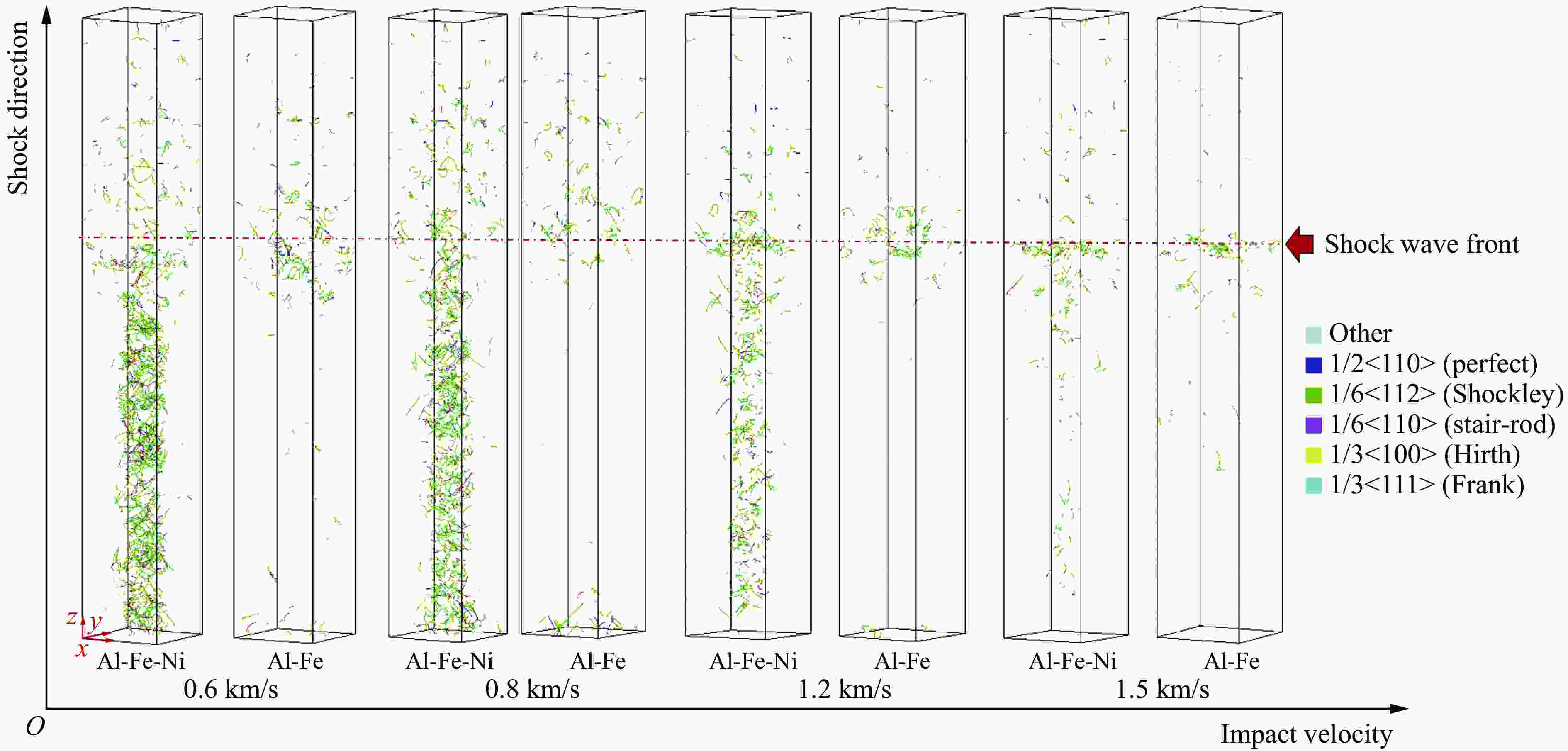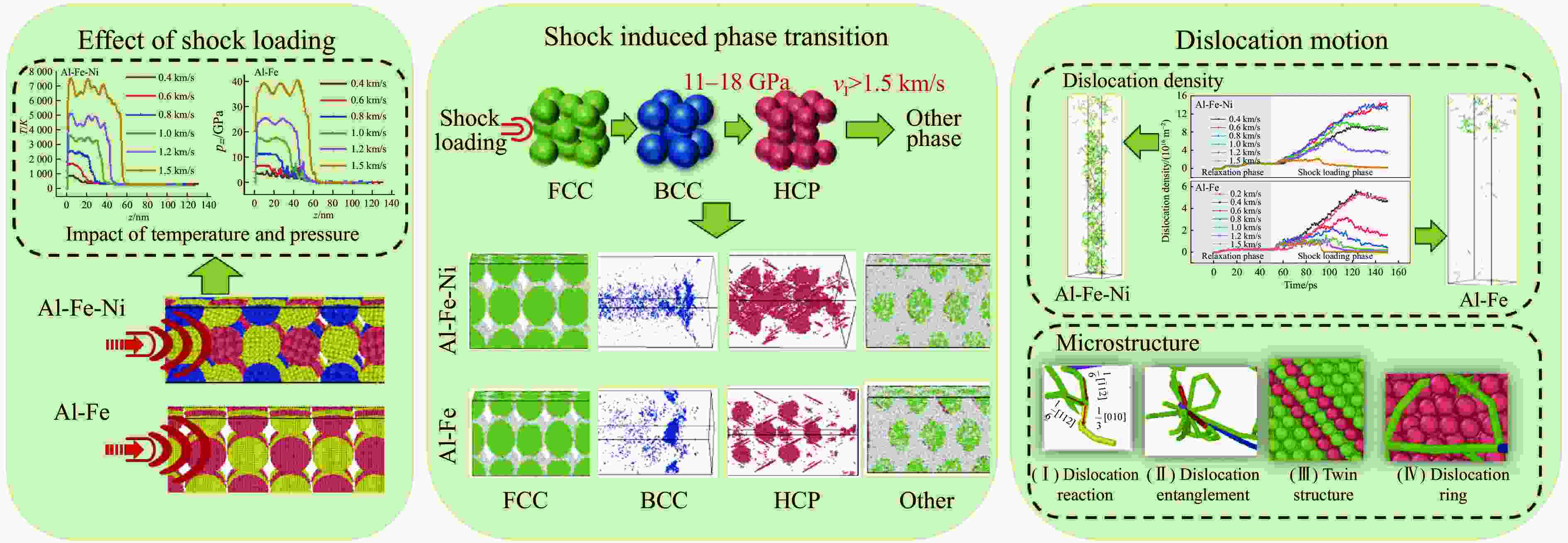| [1] |
黄敏生, 黄嵩, 梁爽, 等. 离散位错动力学算法及其在材料塑性行为模拟中的应用 [J]. 科学通报, 2019, 64(18): 1864–1877. doi: 10.1360/N972018-01291HUANG M S, HUANG S, LIANG S, et al. Discrete dislocation dynamics algorithms and their application in modeling of plastic behaviors of crystalline materials [J]. Chinese Science Bulletin, 2019, 64(18): 1864–1877. doi: 10.1360/N972018-01291
|
| [2] |
FENG H Q, YANG Z B, BAI Y T, et al. Effect of Cr content and cooling rate on the primary phase of Al-2.5Mn alloy [J]. International Journal of Minerals, Metallurgy and Materials, 2019, 26(12): 1551–1558. doi: 10.1007/s12613-019-1862-1
|
| [3] |
LI Q, JIANG C L, DU Y. Molecular dynamics study on dynamic mechanical behaviour of FeCoCrCuNi high entropy alloy [J]. Materials Technology, 2023, 38(1): 2200660. doi: 10.1080/10667857.2023.2200660
|
| [4] |
韦昭召. 不同取向B2结构FeAl合金纳米线弯曲行为的分子动力学模拟 [J]. 物理学报, 2025, 74(3): 036201. doi: 10.7498/aps.74.20241030WEI Z Z. Molecular dynamics simulation of bending behavior of B2-FeAl alloy nanowires with different crystallographic orientations [J]. Acta Physica Sinica, 2025, 74(3): 036201. doi: 10.7498/aps.74.20241030
|
| [5] |
LI Q, JIANG C L, DU Y. Molecular-dynamics study on the impact energy release characteristics of Fe-Al energetic jets [J]. Materials, 2021, 14(18): 5249. doi: 10.3390/ma14185249
|
| [6] |
XIONG Y N, XIAO S F, DENG H Q, et al. Investigation of the shock-induced chemical reaction (SICR) in Ni+Al nanoparticle mixtures [J]. Physical Chemistry Chemical Physics, 2017, 19(27): 17607–17617. doi: 10.1039/C7CP03176A
|
| [7] |
LIU X P, XING R L, ZHAI H, et al. Atomistic simulations of compressive response and deformation mechanisms of body-centered-cubic AlCrFeCoNi high-entropy alloys [J]. Physica B: Condensed Matter, 2023, 671: 415414. doi: 10.1016/j.physb.2023.415414
|
| [8] |
陈嘉琳, 李述涛, 陈叶青. 考虑晶体取向的Al0.3CoCrFeNi高熵合金动态力学性能研究 [J]. 爆炸与冲击, 2024, 44(3): 031401. doi: 10.11883/bzycj-2023-0324CHEN J L, LI S T, CHEN Y Q. A study on dynamic mechanical properties of Al0.3CoCrFeNi high-entropy alloy considering crystal orientation [J]. Explosion and Shock Waves, 2024, 44(3): 031401. doi: 10.11883/bzycj-2023-0324
|
| [9] |
孟钰权. CoCrNiAl0.1Si0.1中熵合金低温和动态力学响应研究 [D]. 太原: 太原理工大学, 2021: 35–36.MENG Y Q. Mechanical response of CoCrNiAl0.1Si0.1 medium entropy alloys upon cryogenic temperatures and dynamic loading [D]. Taiyuan: Taiyuan University of Technology, 2021: 35–36.
|
| [10] |
WANG L, QIAO J W, MA S G, et al. Mechanical response and deformation behavior of Al0.6CoCrFeNi high-entropy alloys upon dynamic loading [J]. Materials Science and Engineering: A, 2018, 727: 208–213. doi: 10.1016/j.msea.2018.05.001
|
| [11] |
熊永南. Ni+Al纳米粉末冲击压缩响应的分子动力学研究 [D]. 长沙: 湖南大学, 2019: 37.XIONG Y N. Molecular dynamic simulation of shock-compression response of Ni+Al nanopowders [D]. Changsha: Hunan University, 2019: 37.
|
| [12] |
FARKAS D, CARO A. Model interatomic potentials for Fe-Ni-Cr-Co-Al high-entropy alloys [J]. Journal of Materials Research, 2020, 35(22): 3031–3040. doi: 10.1557/jmr.2020.294
|
| [13] |
曾子文. 冲击加载下高熵合金微结构与力学性能的分子动力学模拟 [D]. 重庆: 重庆大学, 2022: 15–16.ZENG Z W. Molecular dynamics simulation of microstructure and mechanical properties of high entropy alloys under impact loading [D]. Chongqing: Chongqing University, 2022: 15–16.
|
| [14] |
张路明. AlxCoCrFeNi高熵合金力学性能的分子动力学模拟 [D]. 太原: 太原理工大学, 2022: 19–20.ZHANG L M. Mechanical properties of AlxCoCrFeNi high-entropy alloy: a molecular dynamics study [D]. Taiyuan: Taiyuan University of Technology, 2022: 19–20.
|
| [15] |
胡锦灿. O22Cr17Ni12Mo2合金钢冲击载荷下的塑性行为位错动力学研究 [D]. 长春: 长春工业大学, 2023: 25–26.HU J C. Study on the dynamics of plastic behavior dislocation under the impact load of O22Cr17Ni12Mo2 alloy steel [D]. Changchun: Changchun University of Technology, 2023: 25–26.
|
| [16] |
卢志鹏, 祝文军, 卢铁城. 高压下Fe从bcc到hcp结构相变机理的第一性原理计算 [J]. 物理学报, 2013, 62(5): 056401. doi: 10.7498/aps.62.056401LU Z P, ZHU W J, LU T C. Ab initio study of the bcc-to-hcp transition mechanism in Fe under pressure [J]. Acta Physica Sinica, 2013, 62(5): 056401. doi: 10.7498/aps.62.056401
|
| [17] |
李强, 姜春兰, 王在成. 细晶富铝Al/Fe复合材料动态力学性能及本构关系 [J]. 稀有金属材料与工程, 2015, 44(5): 1124–1128.LI Q, JIANG C L, WANG Z C. Dynamic mechanical properties and constitutive relationship of fine-grained Al/Fe composite materials with rich aluminium [J]. Rare Metal Materials and Engineering, 2015, 44(5): 1124–1128.
|
| [18] |
朱熠奇, 殷艳, 周留成, 等. 激光冲击铝合金微结构演化及力学行为的分子动力学模拟 [J]. 表面技术, 2022, 51(11): 1–9, 57. doi: 10.16490/j.cnki.issn.1001-3660.2022.11.001ZHU Y Q, YIN Y, ZHOU L C, et al. Microstructure evolution and mechanical behavior of laser-shocked aluminium alloy by molecular dynamics simulations [J]. Surface Technology, 2022, 51(11): 1–9, 57. doi: 10.16490/j.cnki.issn.1001-3660.2022.11.001
|
| [19] |
FAN L, YANG T, ZHAO Y L, et al. Ultrahigh strength and ductility in newly developed materials with coherent nanolamellar architectures [J]. Nature Communications, 2020, 11(1): 6240. doi: 10.1038/s41467-020-20109-z
|
| [20] |
解鸿偲. 高熵合金/石墨烯复合材料力学行为的分子动力学研究 [D]. 长春: 吉林大学, 2024: 95.XIE H C. Molecular dynamics study on the mechanical behavior of high-entropy alloy/graphene composites [D]. Changchun: Jilin University, 2024: 95.
|







 下载:
下载:


